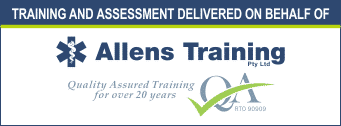Anaphylaxis is a severe, potentially life-threatening allergic reaction that can occur rapidly. Understanding what it is, what triggers it, and how to respond can make a significant difference in an emergency. Whether it’s a friend, a family member, or even a stranger, knowing how to handle anaphylaxis is crucial. Let’s dive into what anaphylaxis is, common triggers, and the steps you should take to provide first aid, including the use of an EpiPen. We’ll also talk about what you’ll learn to do in first aid training for anaphylaxis.
What is Anaphylaxis?
Anaphylaxis is an extreme allergic reaction that affects multiple systems in the body. When someone with severe allergies is exposed to their allergen, their immune system releases a flood of chemicals that can cause them to go into shock. This reaction can lead to symptoms such as swelling, hives, difficulty breathing, a drop in blood pressure, and in severe cases, loss of consciousness. These symptoms can occur within minutes of exposure to the allergen and require immediate medical attention.
To paint a clearer picture, imagine the immune system as the body’s defense force. In anaphylaxis, this defense force goes into overdrive, mistakenly attacking something harmless as if it were a severe threat. This overreaction causes the body to release chemicals like histamine, which leads to the symptoms of anaphylaxis.
Common Triggers of Anaphylaxis

Knowing what can trigger anaphylaxis is essential for both prevention and response. Some common triggers include:
- Food Allergies: Common foods that cause anaphylaxis include peanuts, tree nuts, shellfish, fish, milk, eggs, soy, and wheat.
- Insect Stings: Stings from bees, wasps, hornets, and fire ants can trigger severe reactions in some individuals.
- Medications: Antibiotics like penicillin, aspirin, and non-steroidal anti-inflammatory drugs (NSAIDs) can cause anaphylaxis in certain people.
- Latex: Products made from natural rubber latex, such as gloves and balloons, can trigger allergic reactions.
- Exercise-Induced Anaphylaxis: In rare instances, physical activity can trigger anaphylaxis, especially when combined with certain foods or medications consumed before exercise.
Understanding these triggers helps you avoid potential allergens and be better prepared to act if exposure occurs.
Anaphylaxis Symptoms
Anaphylaxis is a severe allergic reaction that can manifest rapidly and affects multiple systems in the body. Common symptoms include hives, itching, and swelling of the lips, tongue, or throat, which can lead to difficulty breathing and swallowing. Other signs include a sudden drop in blood pressure, resulting in dizziness or fainting, rapid or weak pulse, nausea, vomiting, diarrhea, and abdominal pain. In severe cases, anaphylaxis can cause confusion, a sense of impending doom, and loss of consciousness. Immediate medical intervention is crucial as anaphylaxis can be life-threatening.

How to Use an EpiPen: Your Lifesaver in an Emergency
An EpiPen is one of the most well-known brands of epinephrine autoinjectors, designed to deliver a dose of epinephrine to counteract the severe symptoms of anaphylaxis. However, there are other brands like Anapen and Auvi-Q that serve the same purpose. Using an EpiPen correctly can save a life, so it’s important to know the steps beforehand.
Steps to Use an EpiPen:
- Recognize the Symptoms: Look for signs like itching, hives, swelling, shortness of breath, and dizziness.
- Retrieve the EpiPen: Ensure the EpiPen is easily accessible. Time is of the essence.
- Remove the Safety Cap: Hold the EpiPen with the orange tip pointing downward. Pull the blue safety cap straight up without bending or twisting it.
- Administer the Injection:
- Place the orange tip against the middle of the outer thigh, ensuring it is at a right angle to the leg.
- Push the EpiPen firmly into the thigh until you hear a click. Hold it in place for 10 seconds to ensure the full dose is delivered.
- The injection can be administered through one layer of clothing, but not through seams.

- Seek Emergency Medical Help: Call emergency services immediately after using the EpiPen. Anaphylaxis can have a ongoing symptoms even once the adrenaline is injected, so medical supervision is crucial.
- Monitor the Person: Keep the person lying down with their legs elevated. If they are vomiting or feel nauseous, have them lie on their side to prevent choking.
Other brands like Anapen operate similarly but may have slight differences in instructions, so it’s important to read and understand the specific device you are using.

Second Injection of Epinephrine
In some cases of severe anaphylaxis, a single injection of epinephrine may not be sufficient to fully control the symptoms. If there is no significant improvement in symptoms within 5 minutes after the first injection, a second dose of epinephrine may be necessary. This second injection should be administered in the same way as the first, typically in the outer thigh. It’s important to monitor the individual’s condition continuously and ensure that emergency medical help is on the way. Using a second dose can be critical in preventing the progression of the reaction and providing additional time for professional medical treatment to arrive. Always follow medical advice regarding the use of a second injection and be prepared to inform emergency responders about the timing and dosage of epinephrine administered.
Basic First Aid Steps for Anaphylaxis (Beyond the EpiPen)
While the EpiPen is crucial, there are additional first aid steps you can take:
- Stay Calm and Assess the Situation: Keeping calm helps reassure the person experiencing anaphylaxis. Quickly assess their symptoms and condition.
- Call for Help: Dial emergency services immediately, even if you have administered an EpiPen. Professional medical intervention is necessary.
- Position the Person Appropriately: Have the person lie down on their back with legs elevated to maintain blood flow. If breathing is difficult, let them sit up slightly.
- Monitor Breathing and Circulation: Keep a close watch on their breathing and circulation. Be prepared to administer CPR if needed.
- Keep Them Warm and Comfortable: Use a blanket to prevent shock. Comfort and warmth can help stabilize their condition.
- Avoid Giving Food or Drink: Do not give anything to eat or drink, as it may cause choking or worsen the reaction.
- Provide Reassurance: Speak to the person calmly, assuring them that help is on the way. Your presence can help reduce their anxiety.
These steps, combined with the use of an EpiPen, can provide crucial support until emergency medical services arrive.
The Wrap-Up
Anaphylaxis is a serious and potentially life-threatening condition that requires immediate action. Understanding what it is, identifying common triggers, knowing how to use an EpiPen, and being aware of additional first aid steps can make all the difference in an emergency.

First aid training is invaluable, equipping you with the knowledge and confidence to act swiftly and effectively. Through training, you can practice using devices like the EpiPen hands-on, ensuring you are ready to respond correctly in a real situation. Consider enrolling in a first aid course to gain comprehensive training and hands-on practice. Being prepared can make all the difference in emergencies, ensuring you are ready to act when it matters most.






